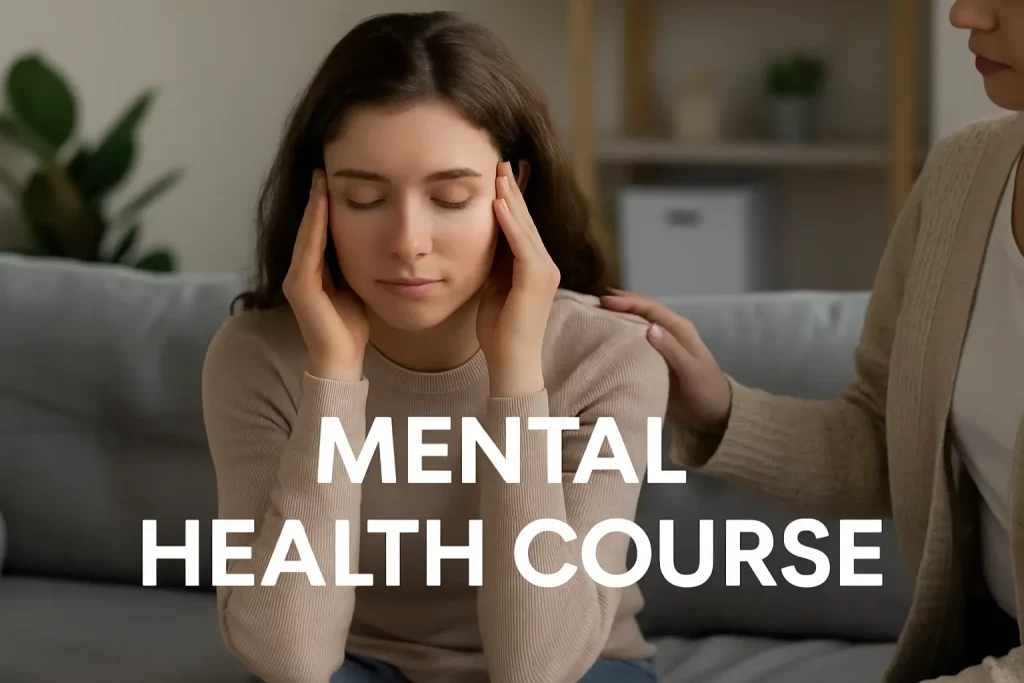Pyrophobia, a deep phobia of fire, is an intense fear of fire that goes beyond a normal sense of caution. This anxiety disorder can trigger severe panic and a desperate need to avoid anything involving flames. For those who have it, pyrophobia can significantly disrupt daily life, making simple activities like cooking or attending a bonfire feel impossible.
Many people wonder, “How common is pyrophobia?” and “What causes pyrophobia?” While it’s considered a relatively rare phobia, its effects are very real. The pyrophobia symptoms can be severe, including a racing heart, sweating, and trembling. This fear often stems from a traumatic event, but it can also develop without a clear cause. Fortunately, with the right support, this phobia is manageable.

What is Pyrophobia?
Pyrophobia is a specific phobia that refers to an intense, irrational, and persistent fear of fire. For someone with pyrophobia, even small flames, like those from a candle or a gas stove, can trigger severe anxiety, panic attacks, or avoidance behaviours. This fear is not just discomfort or nervousness around fire; it’s an overwhelming reaction that can interfere with daily life and functioning.
Fear vs. Phobia of Fire
It’s important to distinguish between a natural fear of fire and a phobia.
- Fear of fire is a normal, instinctive response that helps keep us safe. Most people are cautious around fire because it can cause harm if not handled properly. This kind of fear is proportional and protective.
- Pyrophobia, on the other hand, is disproportionate and irrational. The fear doesn’t match the actual level of danger present. A person with pyrophobia might experience intense distress even when they are completely safe, such as seeing a controlled flame on TV or being near a barbecue at a safe distance.
In short, while fear of fire can be healthy and situational, pyrophobia is a psychological condition that often requires support or treatment to manage effectively.
What Causes Pyrophobia?
Like many specific phobias, pyrophobia doesn’t have a single cause. Instead, it often develops from a combination of personal experiences, learned behaviors, and biological factors. Understanding these possible origins can help make sense of why this intense fear of fire takes hold in some people.
Traumatic Experiences
One of the most common triggers for pyrophobia is a past traumatic event involving fire. This could include witnessing or experiencing a house fire, burn injuries, or even seeing a fire-related accident as a child. Such experiences can create strong, lasting associations between fire and danger.
Learned Behaviour
Children often learn how to respond to threats by observing adults. If a parent or caregiver has a strong fear of fire or responds to it with panic, a child may internalize that reaction and develop similar fears over time. This is called observational learning.
Genetic and Biological Factors
Research suggests that some people may be genetically predisposed to anxiety disorders and phobias. If you have a family history of phobias or other mental health conditions, you might be more likely to develop pyrophobia yourself.
Psychological and Biological Explanations
From a psychological perspective, pyrophobia can be understood through the lens of classical conditioning, where a neutral stimulus (like the sight of fire) becomes linked to feelings of fear and panic after a distressing experience. Over time, the brain learns to react with anxiety even in situations that aren’t dangerous.
Biologically, the brain’s amygdala, the area that processes fear, can become hypersensitive to certain triggers. This heightened sensitivity means that even thinking about fire can activate the body’s fight-or-flight response, causing intense anxiety and physical symptoms such as a racing heart, sweating, or dizziness.
The Signs and Symptoms of Pyrophobia
Pyrophobia affects people in different ways, but the fear usually triggers a combination of physical, emotional, and behavioural symptoms. These reactions can range from mild unease to overwhelming panic, depending on the person and the situation.
Below are some of the most common signs to look out for:
Physical Symptoms
When someone with pyrophobia is exposed to fire or even imagines being near it, the body can go into a state of high alert. This reaction, known as the fight-or-flight response, causes a surge of stress hormones like adrenaline. As a result, individuals may experience:
- Rapid heartbeat or palpitations
- Shortness of breath or hyperventilation
- Excessive sweating
- Trembling or shaking
- Dry mouth
- Nausea or upset stomach
- Feeling dizzy or lightheaded
- Chills or hot flashes
These symptoms can occur suddenly and may feel out of proportion to the actual level of danger.
Emotional and Behavioural Symptoms
Pyrophobia not only affects the body, but it also impacts thoughts, emotions, and behaviours. Many people describe feeling out of control or trapped by their fear. Common emotional and behavioural signs include:
- Intense anxiety or panic when seeing fire, hearing fire alarms, or smelling smoke
- Persistent worry about encountering fire, even in safe environments
- Avoidance of situations where fire might be present, such as cooking, using candles, or attending events with fireworks
- Feelings of dread, helplessness, or embarrassment about the fear
- Difficulty concentrating or thinking clearly when faced with fire-related situations
- Reassurance-seeking or needing someone else present to feel safe
Ready to reclaim your peace of mind?
Reach out to Mental Health First Aid Courses at Hurak today. Start your path to a calmer, more empowered life.
Enrol in our Mental Health First Aid Course.
How to Overcome Pyrophobia?
Overcoming pyrophobia is possible with the right approach, support, and mindset. While this fear can feel overwhelming, many people successfully manage and reduce their symptoms through self-help techniques, therapy, and lifestyle changes. The key is understanding that fear of fire, while intense, doesn’t have to control your life.
Self-Help Strategies
If your pyrophobia is mild or manageable, there are several practical steps you can take to reduce your anxiety and regain a sense of control:
- Education and Awareness: Learn about fire safety and how fire is managed in everyday settings. Understanding the science and safety measures can help reduce irrational fears.
- Gradual Exposure: Slowly and safely expose yourself to fire-related situations. Start small, like looking at pictures of candles or watching a fireplace on video—and build up as your comfort increases.
- Relaxation Techniques: Practice breathing exercises, mindfulness, or progressive muscle relaxation to calm your body’s stress response when you feel triggered.
- Journaling: Write about your fears, triggers, and progress. This can help you reflect on patterns and track improvements over time.
- Support Networks: Talk to trusted friends or family members about your fear. You’re not alone, and support can make a big difference.
When to Seek Professional Help
While some people can manage pyrophobia with self-help strategies, professional support may be necessary if:
- The fear interferes with your daily life, work, or relationships.
- You avoid normal activities (like cooking or attending events) due to fear of fire.
- You experience panic attacks or intense physical symptoms.
- The fear has persisted for six months or more without improvement.
Seeking help is a sign of strength, not weakness. Mental health professionals can provide effective tools and support tailored to your needs.
Treatment Options
There are proven therapies that help people overcome phobias like pyrophobia:
Cognitive Behavioural Therapy (CBT)
CBT is one of the most effective treatments for specific phobias. It helps you identify and challenge irrational thoughts about fire and replace them with more balanced, realistic thinking. Over time, this reduces fear and avoidance behaviors.
Exposure Therapy
Often used alongside CBT, exposure therapy involves facing your fear in a safe, controlled way. Starting with low-risk situations (like watching a video of a fire), you gradually build tolerance and reduce anxiety.
Medication (in some cases)
While not a first-line treatment, medications such as anti-anxiety drugs or antidepressants may be prescribed in severe cases to manage symptoms, especially if the phobia coexists with other anxiety disorders.
Hypnotherapy and Other Techniques
Some individuals find relief through hypnotherapy, visualisation, or EMDR (Eye Movement Desensitisation and Reprocessing), particularly if their fear is rooted in trauma.
Conclusion
Pyrophobia, the intense fear of fire, can deeply impact daily life. But you’re not alone, and effective help is available. By understanding the causes and symptoms, you’ve already begun the journey toward managing this fear.
With self-help strategies, professional therapy, or both, it’s possible to reduce anxiety and regain control. If pyrophobia is affecting you, consider reaching out to a mental health professional. Every step you take is progress toward a calmer, more confident life.
FAQs
What is pyrophobia?
Pyrophobia is an intense, irrational fear of fire. Unlike normal caution, it causes severe anxiety or panic even when there is little or no real danger.
How common is pyrophobia?
Exact statistics are limited, but specific phobias like pyrophobia are estimated to affect up to 12% of people at some point in their lives.
What causes pyrophobia?
Pyrophobia can develop from traumatic experiences with fire, learned behaviors, genetic factors, or a combination of these influences.
What are the symptoms of pyrophobia?
Symptoms include rapid heartbeat, sweating, shortness of breath, intense anxiety, avoidance of fire-related situations, and panic attacks.
How can pyrophobia be treated?
Treatment options include cognitive behavioural therapy (CBT), exposure therapy, relaxation techniques, and in some cases, medication or hypnotherapy.
Explore Our First Aid Courses
- Emergency First Aid at Work
A practical, hands-on course designed for low-risk workplaces. This training equips participants with the essential skills and confidence to respond swiftly and effectively to medical emergencies. - First Aid at Work
A comprehensive, Ofqual-regulated Level 3 qualification delivered over three days in a classroom setting. Ideal for designated first aiders in higher-risk environments such as construction sites, warehouses, and manufacturing facilities. - Paediatric First Aid
A two-day, Ofqual-regulated course focused on first aid for infants (0–1 year) and children up to puberty. Perfect for childcare professionals, teachers, and parents who want to feel fully prepared to handle emergencies involving young children. - Basic First Aid Course
An introductory, self-paced program suitable for anyone who wants a general understanding of first aid or a convenient annual refresher to keep their skills up to date. - Advanced First Aid Course
A fully online, self-paced Level 3 course offering in-depth training for those who wish to expand their knowledge and develop advanced first aid skills beyond the basics.





